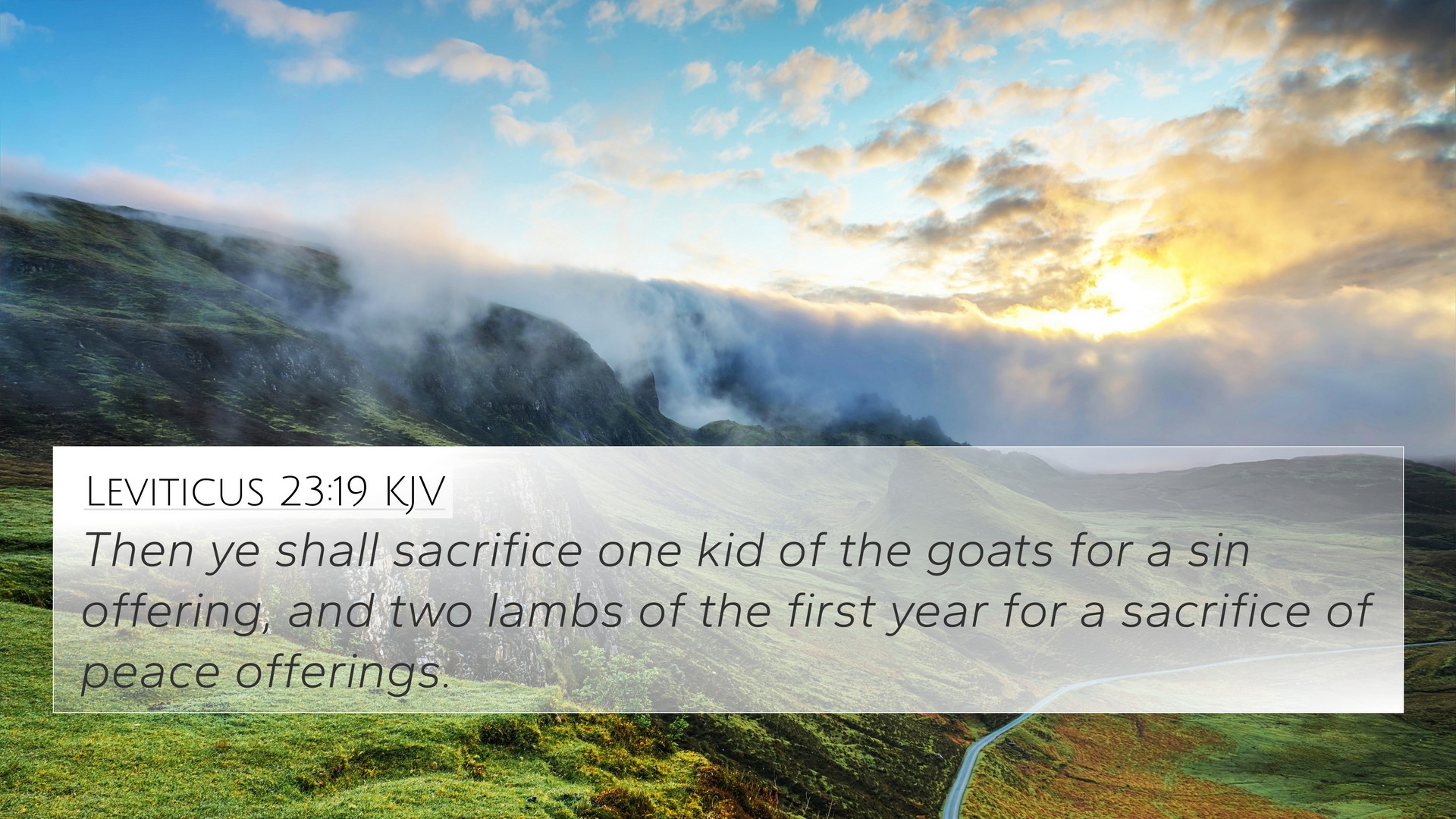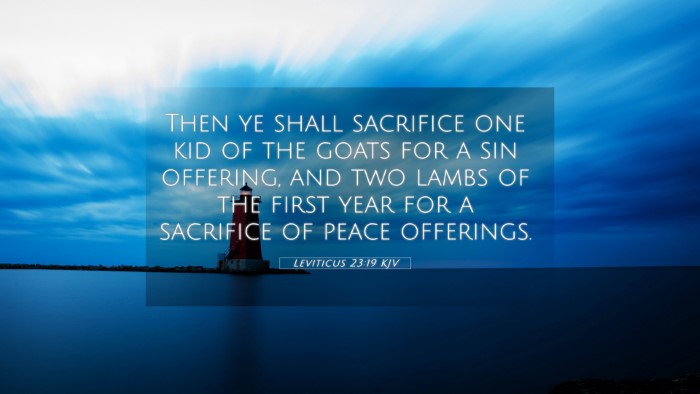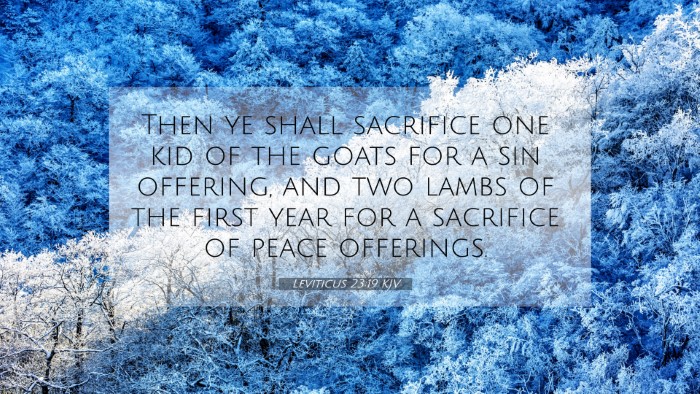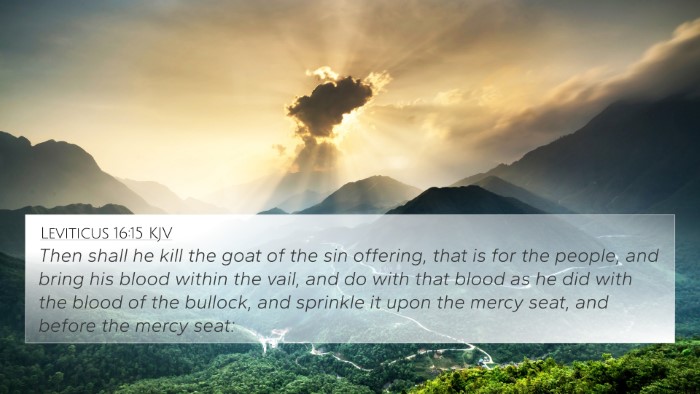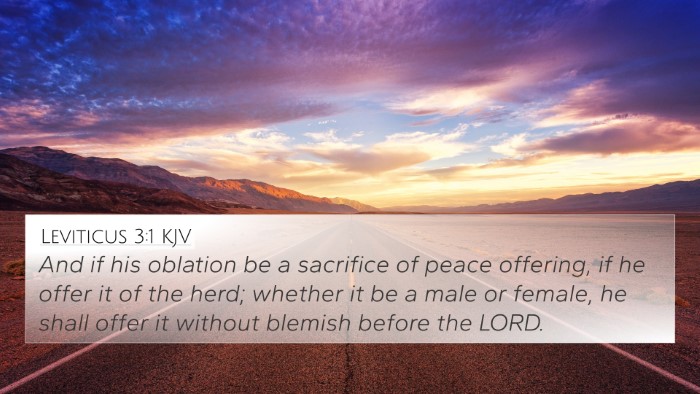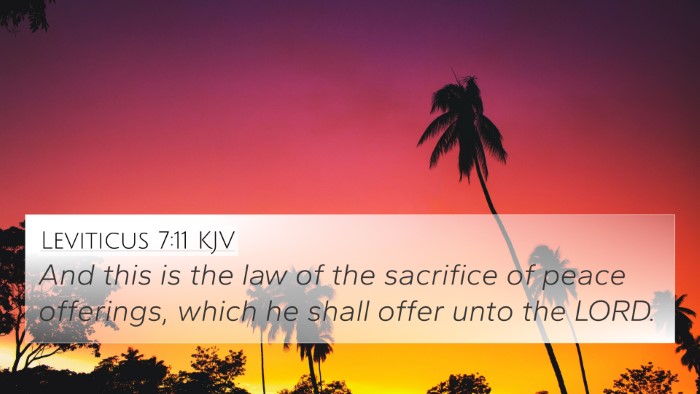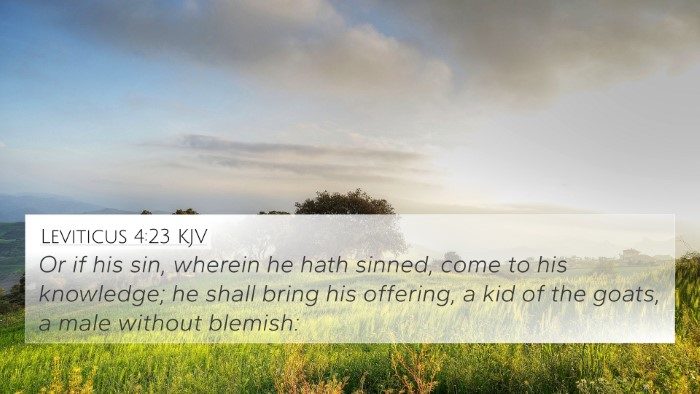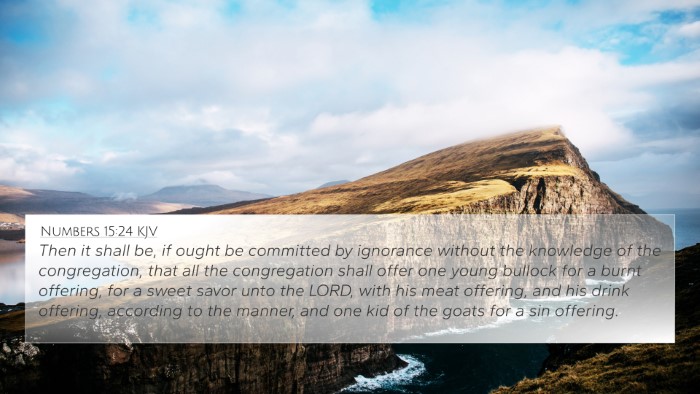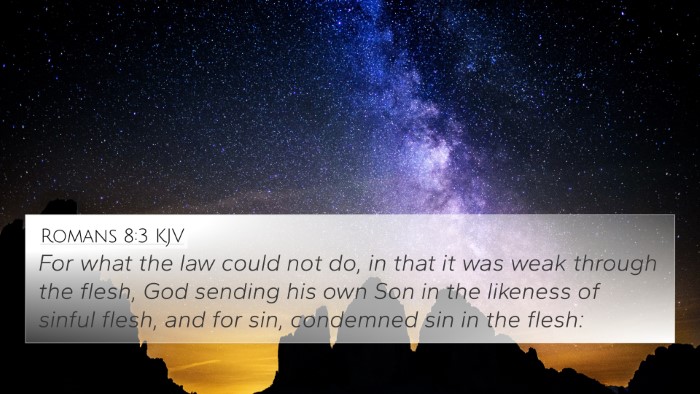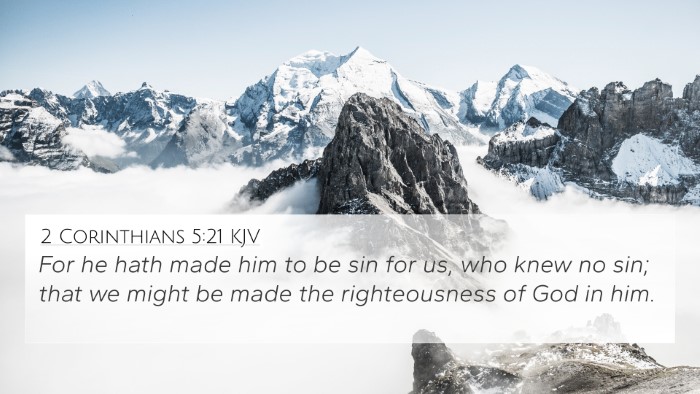Understanding Leviticus 23:19
Leviticus 23:19 states: "Then you shall offer one male goat for a sin offering, and two male lambs, one year old, for a sacrifice of peace offerings." This verse is a part of the instructions given to the Israelites regarding their various offerings during the Feast of Weeks, also known as Pentecost. To gain a deeper understanding, let’s explore its meaning through insights drawn from renowned public domain commentaries.
Commentary Insights
Matthew Henry's Commentary
Matthew Henry emphasizes the significance of the peace offerings and sin offerings. He points out how these sacrificial acts were vital in maintaining the people's relationship with God, enabling forgiveness and joy in His presence. The male goat represents atonement, while the lambs signify fellowship and communion with God. Henry notes the necessity of both offerings symbolizing the need for reconciliation and praise.
Albert Barnes' Commentary
Albert Barnes provides insights on the ceremonial law and its implications. He comments on the precision required in the offerings, reflecting the seriousness with which God approached worship. The offering of lambs, in conjunction with a goat, highlights the dual aspect of worship: penitence alongside celebration. Barnes also points out how these sacrifices relate to later New Testament themes of sacrifice and atonement.
Adam Clarke's Commentary
Adam Clarke focuses on the symbolism embodied in the offerings. He explains that the male goat was a representation of Christ as our sin-bearer. Clarke connects the sin offering to the fundamental theme of sacrifice throughout Scripture, illustrating how this connects with the New Testament understanding of Jesus as the ultimate sacrifice.
Cross-References
In examining Leviticus 23:19, we can identify numerous Bible verses that relate to each other. Below are ten relevant cross-references that shed light on its meaning:
- Exodus 29:36 - Discusses the offering of a sin offering for atonement.
- Leviticus 4:23-24 - Details specific offerings when one commits a sin unknowingly.
- Leviticus 3:1-5 - Specifies peace offerings, their purpose, and outcomes.
- Romans 12:1 - Encourages presenting our bodies as living sacrifices, emerging from the law's insights.
- Hebrews 9:22 - Stresses the need for blood in atonement, connecting with the sacrificial system.
- 1 Peter 1:18-19 - Refers to Christ as the perfect lamb without blemish, linking back to the sacrificial lambs of Leviticus.
- Isaiah 53:6 - Portrays the concept of atonement through sacrifice, fulfilling the prophetic visions of offerings.
- Numbers 15:8-10 - Reiterates guidelines for grain and drink offerings associated with sacrifices.
- Ephesians 2:13 - Speaks of peace made through Christ, drawing lines back to the peace offerings.
- Matthew 5:24 - Illustrates the importance of reconciliation before offering to God, echoing the peace offering's intent.
Thematic Connections
The thematic Bible verse connections in Leviticus 23:19 relate to broader themes in Scripture such as:
- Atonement: The necessity of repenting and reconciling with God.
- Sacrifice: The importance of sacrificing the best for God as seen throughout the Old Testament.
- Community Worship: The role of communal offerings during significant feasts enhances ties among the Israelites.
- God's Holiness: Reflection upon the sacredness of God demands appropriate offerings reflecting reverence.
Inter-Biblical Dialogue
There is a significant inter-Biblical dialogue between the Old and New Testaments concerning the offerings. The motifs of sacrifice and atonement recur throughout Scripture, demonstrating God’s unchanging character and His consistent provision of a way for reconciliation through Jesus Christ, who fulfills the Law (Matthew 5:17).
Conclusion
Leviticus 23:19 encapsulates much of the sacrificial system that is central to understanding the narrative of redemption throughout the Bible. The peace and sin offerings not only illustrate the practices of the Israelites but also foreshadow and are fulfilled in the New Testament’s portrayal of Jesus Christ as the ultimate sacrifice. This interplay of scripture invites deeper exploration of thematic reasons associating various verses and the need for continual reconciliation with God through Christ.
